Assessing student progress is crucial for fostering growth and achievement. Effective use of both summative and formative assessments can provide a comprehensive understanding of students’ learning needs. This article explores top strategies for implementing these assessment types, highlighting their definitions, purposes, and key differences. By delving into the benefits, methods, and tools associated with each, we aim to equip educators and parents with the best practices to enhance educational effectiveness. Additionally, we’ll examine how to integrate both assessment types, present real-life case studies, address common challenges, and explore future trends, offering practical tips to support educators in achieving robust student assessment strategies.
Investigate this topic thoroughly with gameshoek.com
1. Definition and Purpose
Formative and summative assessments serve distinct but complementary roles in the educational process. Formative assessment is an ongoing process used by educators to monitor student learning and provide continuous feedback that can be used to improve teaching and learning. Its primary purpose is to identify students’ strengths and weaknesses, enabling educators to address learning gaps promptly. Examples include quizzes, class discussions, and informal observations, all aimed at guiding the instructional process and helping students improve in real-time.
On the other hand, summative assessment occurs at the end of an instructional period and evaluates student learning by comparing it against a standard or benchmark. This type of assessment is used to measure the effectiveness of instructional programs and determine whether learning objectives have been met. Common examples include final exams, standardized tests, and end-of-term projects. Summative assessments are typically used for reporting purposes, such as grades or progress reports, and provide a broader overview of student achievement.
Understanding the definitions and purposes of formative and summative assessments is essential for implementing them effectively. Formative assessments focus on the process of learning, aiming to enhance student engagement and understanding throughout the course. Summative assessments, in contrast, provide a conclusive measure of student performance at a specific point in time, offering valuable data to inform future educational decisions. Together, they create a balanced approach to assessing and supporting student growth.

2. Key Differences
Understanding the key differences between formative and summative assessments is crucial for effectively utilizing both in educational settings. Formative assessments are continuous and interactive, designed to provide immediate feedback to both students and teachers. This ongoing process helps in identifying learning gaps, adjusting instruction, and improving student understanding in real-time. Formative assessments are typically informal and varied, including activities such as quizzes, class discussions, peer reviews, and observational assessments.
In contrast, summative assessments are evaluative and occur at the end of an instructional period. They are used to measure the extent of student learning against predetermined standards or benchmarks. Summative assessments are generally formal and standardized, including final exams, standardized tests, major projects, and end-of-term papers. The primary goal of summative assessments is to evaluate the effectiveness of instructional programs and to assign grades or report on student performance.
The timing of these assessments also marks a significant difference. Formative assessments are conducted throughout the learning process, providing ongoing opportunities for students to improve. Summative assessments, however, are administered after a set period, providing a final measure of what students have learned.
While formative assessments focus on the process of learning, summative assessments emphasize the product of learning. Together, they offer a comprehensive approach to understanding and enhancing student achievement, guiding both immediate instructional decisions and long-term educational strategies.
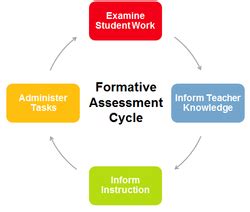
3. Benefits
Both formative and summative assessments offer distinct benefits that contribute to a holistic approach to student evaluation and growth. Formative assessments provide immediate feedback, which is crucial for identifying and addressing learning gaps promptly. This real-time insight helps educators tailor their instruction to meet individual student needs, fostering a more personalized learning experience. Additionally, formative assessments encourage active student participation and engagement, as students are continuously involved in their learning process. This ongoing feedback loop not only enhances understanding but also boosts student confidence and motivation.
Summative assessments, on the other hand, provide a clear and comprehensive measure of student learning at the end of an instructional period. They offer valuable data that can be used to evaluate the effectiveness of educational programs and curricula. This information is critical for making informed decisions about future instructional strategies and educational policies. Summative assessments also serve an important accountability function, as they provide a standardized way to measure and report on student performance.
Combining both types of assessments creates a balanced and robust evaluation system. Formative assessments drive day-to-day instructional improvements, while summative assessments provide overarching insights into student achievement and program efficacy. Together, they ensure that educators have the necessary tools to support continuous student growth, adapt teaching methods, and achieve long-term educational goals.
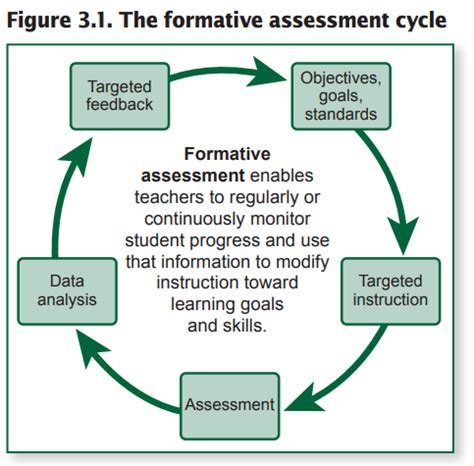
4. Methods and Tools
Effective methods and tools are essential for implementing both formative and summative assessments. For formative assessments, educators can use a variety of techniques such as quizzes, polls, and exit tickets to gauge student understanding. Classroom discussions, peer reviews, and observational assessments are also valuable for providing immediate feedback and identifying areas for improvement. Digital tools like educational apps and online platforms can facilitate real-time feedback and interactive learning activities.
Summative assessments typically involve more formal methods. These include standardized tests, final exams, and major projects, which are designed to evaluate cumulative student learning. Rubrics and scoring guides are often used to ensure consistency and objectivity in grading. Online assessment tools and learning management systems (LMS) can streamline the administration and analysis of summative assessments, providing comprehensive data on student performance.
By leveraging a mix of traditional and digital tools, educators can effectively implement both formative and summative assessments to support and enhance student learning outcomes.
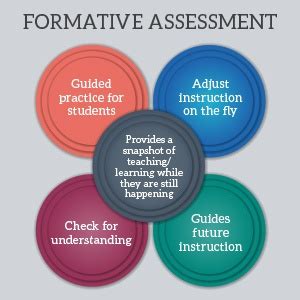
5. Best Practices
Implementing best practices for formative and summative assessments ensures their effectiveness in enhancing student growth and achievement. For formative assessments, regular and consistent application is key. Teachers should integrate various methods, such as quizzes, discussions, and peer reviews, into their daily instructional routines. Providing timely and constructive feedback helps students understand their progress and areas needing improvement. It’s essential to create a supportive classroom environment where students feel comfortable participating and making mistakes as part of the learning process.
For summative assessments, clear communication of expectations and criteria is crucial. Teachers should provide detailed rubrics and guidelines well in advance, helping students understand how their work will be evaluated. It’s also beneficial to align summative assessments with learning objectives to ensure they accurately measure student achievement. Using a variety of assessment types, such as projects, exams, and presentations, can cater to different learning styles and provide a comprehensive evaluation of student learning.
Additionally, combining data from both formative and summative assessments offers a more complete picture of student progress. Analyzing this data allows educators to identify trends, adjust instruction, and implement targeted interventions. By adhering to these best practices, teachers can create a balanced and effective assessment strategy that supports continuous student development and success.
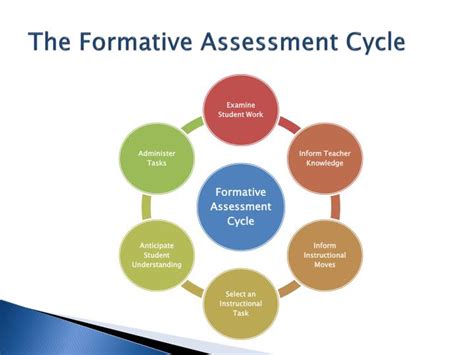
6. Integrating Both Types
Integrating formative and summative assessments is essential for creating a cohesive and effective evaluation strategy that enhances student learning. To achieve this integration, educators should start by aligning both types of assessments with the learning objectives and standards of their curriculum. This alignment ensures that the information gathered from formative assessments can directly inform and enhance the outcomes measured by summative assessments.
One effective approach is to use formative assessments to build up to summative assessments. For instance, teachers can design formative activities that gradually increase in complexity and closely resemble the format and content of the final summative assessments. This not only prepares students for the summative evaluation but also allows teachers to monitor progress and make necessary instructional adjustments along the way.
Regular reflection and analysis of assessment data are crucial. Teachers should consistently review formative assessment results to identify patterns and areas where students may need additional support. These insights can guide instructional strategies and interventions leading up to summative assessments, ensuring that students are adequately prepared.
Moreover, incorporating student self-assessment and peer assessment can bridge the gap between formative and summative assessments. Encouraging students to reflect on their learning and set personal goals based on formative feedback fosters a growth mindset and prepares them for the summative evaluation.
By thoughtfully integrating both types of assessments, educators can create a dynamic and responsive learning environment that supports continuous student growth and achievement.

7. Case Studies and Examples
Case studies and real-world examples highlight the practical application of integrating formative and summative assessments in diverse educational settings. For instance, in a high school biology class, a teacher used formative assessments such as weekly quizzes and interactive lab activities to gauge students’ understanding of complex concepts. The data from these formative assessments allowed the teacher to adjust instruction, providing additional support where needed. At the end of the unit, a comprehensive summative assessment, including a final exam and a research project, evaluated the students’ cumulative knowledge. The combination of ongoing feedback and a final evaluation provided a well-rounded view of student learning.
In another example, a middle school math teacher implemented a blended approach using formative assessments like exit tickets and homework checks. The teacher used this data to identify students struggling with specific topics and provided targeted interventions. The summative assessment, which included a major test and a project, was aligned with the skills practiced through formative assessments. This approach not only improved students’ performance on the summative test but also helped them retain and apply mathematical concepts more effectively.
These case studies illustrate how integrating formative and summative assessments can enhance teaching practices and improve student outcomes by providing a comprehensive approach to evaluating and supporting learning.

8. Challenges and Solutions
Implementing both formative and summative assessments presents several challenges, but there are effective strategies to address them. One common challenge is balancing the time required for frequent formative assessments with the need for thorough summative evaluations. Teachers can overcome this by streamlining formative assessment processes, using quick and efficient methods such as digital quizzes or in-class activities that provide instant feedback.
Another challenge is ensuring consistency and objectivity in summative assessments. To address this, educators should use clear rubrics and scoring guides to maintain fairness and transparency. Additionally, regular calibration sessions with colleagues can help ensure that grading standards are consistently applied.
Students may also experience assessment fatigue, particularly if they perceive frequent formative assessments as overwhelming. To mitigate this, teachers can design formative assessments that are engaging and directly tied to learning objectives, making them less burdensome and more relevant to students’ progress.
Finally, integrating assessment data effectively requires careful analysis and reflection. Utilizing educational technologies and data management tools can help teachers efficiently analyze assessment results and make data-driven decisions to support student learning and achievement.

9. Future Trends
Future trends in assessment are likely to continue evolving with advancements in technology and educational practices. One significant trend is the increasing use of digital tools and platforms for both formative and summative assessments. These technologies enable real-time feedback, automated grading, and detailed analytics, which help educators track student progress more efficiently and tailor instruction to meet individual needs. Adaptive learning systems that adjust content based on student performance are becoming more prevalent, offering personalized learning experiences.
Another trend is the integration of formative assessments into everyday classroom activities. Educators are increasingly using strategies such as gamification and interactive simulations to make formative assessments more engaging and informative. This approach helps maintain student motivation and provides ongoing insights into their learning progress.
Additionally, there is a growing emphasis on developing 21st-century skills through assessments, such as critical thinking, creativity, and collaboration. Assessments are being designed to evaluate these skills alongside traditional academic knowledge, preparing students for a rapidly changing world.
Overall, the future of assessment is moving toward more personalized, technology-driven, and skill-focused approaches that aim to enhance student learning outcomes and better prepare them for future challenges.
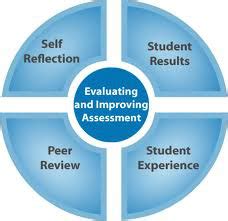
10. Practical Tips for Educators
To effectively implement formative and summative assessments, educators can follow several practical tips. Start by integrating formative assessments seamlessly into daily instruction. Use a variety of methods, such as quick quizzes, exit tickets, and classroom polls, to gauge student understanding regularly. Providing timely and constructive feedback helps students address learning gaps and stay engaged. Keep formative assessments varied and interactive to maintain student interest and participation.
For summative assessments, ensure that they are aligned with learning objectives and clearly communicate expectations to students. Provide detailed rubrics and guidelines in advance, so students understand how their work will be evaluated. Use a mix of assessment types, such as projects, presentations, and written exams, to cater to different learning styles and provide a comprehensive measure of student achievement.
Leverage technology to streamline the assessment process. Utilize digital tools for creating, administering, and analyzing assessments, which can save time and provide valuable data insights. Incorporate self-assessment and peer assessment opportunities, encouraging students to reflect on their learning and provide feedback to their peers.
Finally, regularly review and analyze assessment data to inform instructional decisions. Use this data to adjust teaching strategies, provide targeted interventions, and continuously improve both formative and summative assessment practices. These tips will help create a balanced and effective assessment strategy that supports student growth and achievement.

Incorporating both formative and summative assessments is vital for a comprehensive approach to student evaluation. By understanding their distinct purposes, benefits, and best practices, educators can effectively use these tools to enhance student learning and achievement. Integrating formative assessments with summative evaluations provides continuous feedback and ensures a well-rounded view of student progress. While challenges exist, employing strategies such as leveraging technology and maintaining clear communication can mitigate these issues. Embracing future trends and practical tips will enable educators to implement robust assessment strategies, ultimately fostering a supportive and dynamic learning envi
gameshoek.com
